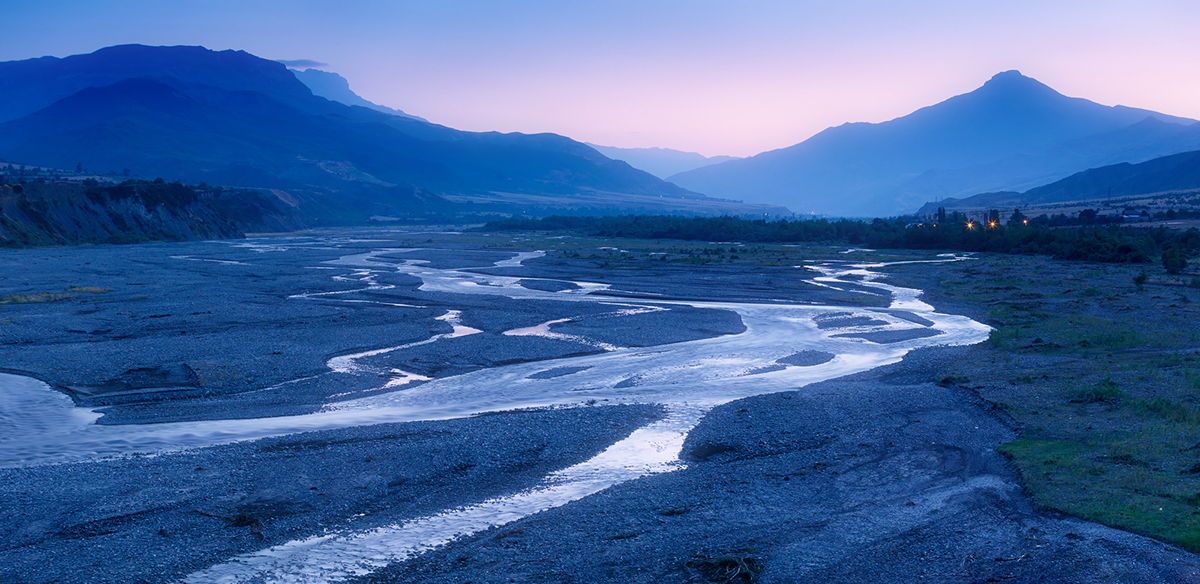
Dagestan-Azerbaijan Relations: a New Flash Point in the Caucasus?
Publication: Eurasia Daily Monitor Volume: 13 Issue: 91
By:

The Dagestan Days festival opens in Baku this week (May 12–13), during which ties between that republic in the Russian North Caucasus and Azerbaijan will be celebrated and new business deals announced (Azertag.az, May 7). However, relations between these two Muslim republics are increasingly tense. Problems stem from their religiously and ethnically intermixed populations as well as controversies over land and water rights. These issues would exist even if no other powers were involved. But the Dagestani-Azerbaijani relationship is further strained by the broader geopolitical competition in the Caucasus between Russia, Turkey and Iran as well as the willingness of each of these powers to exploit such tensions for their own purposes.
In advance of the festival in Baku, Dagestani journalist Eduard Urazayev has surveyed some of these issues and suggests that, while “externally everything always is presented as wonderful,” it is “unfortunately” the case that just below the surface there are real dangers—even if the media in both Dagestan and Azerbaijan generally refuse to discuss them given their sensitivity. Moreover, he argues that the clearest indicators of how problematic the relationship has become can be seen in the absence of Azerbaijani investment in Dagestan as well as the slowness with which Dagestan has responded to the land needs of Azerbaijani refugees from the Karabakh war who relocated to the Northeastern Caucasus republic (Kavpolit.com, May 4).
Another problem in relations is the situation of members of Dagestani nationalities living just across the border in Azerbaijan. Under Azerbaijani law, they have equal rights; but they have sometimes complained of mistreatment not only because they are Sunni Muslims living in a predominantly Shiite state but also because they have sought to maintain their ties with co-ethnics in restive Dagestan. Both of these factors have caused Baku to view them with suspicion. And such an attitude is exacerbated by Azerbaijan’s desire to present itself as a full-fledged participant in the international battle against Islamist extremism. Furthermore, Moscow has used these groups, the Avars and Lezgins in particular, to put pressure on Baku or even undermine Azerbaijan’s control of its territory (see EDM, July 2, 2012; December 9, 2014).
Indeed, as Azerbaijani officials have previously pointed out—though which Urazayev does not mention—representatives of these two ethnic communities pose more of a religious threat than an ethnic one. One study found that the majority of 1,500 people from Azerbaijan who have gone to Syria to fight in the ranks of the Islamic State are from the predominantly Sunni north of the country and thus almost certainly consist of Avars and Lezgins rather than ethnic Azerbaijanis (Kavkazoved.info, November 6, 2015). As in Russia and Central Asia, Baku is particularly worried about how such people will behave when they return to Azerbaijan, especially given their links not only to the Islamic State but to the restive Muslim republic to the north, where most of their co-ethnics live.
These Azerbaijani concerns were heightened by more recent revelations about the increasing involvement of Shiite Iran and Sunni Turkey with their respective co-religionists inside Azerbaijan. Urazayev says that these developments have raised questions about the ultimate loyalty of those ethnic minorities to the Azerbaijani state. So far, these developments have not really affected the situation, he continues, “but if at the geopolitical level any radical shifts begin to take place, then this could be reflected on the Dagestanis in Azerbaijan,” with a possible crackdown by Baku that would have consequences in Makhachkala and Moscow. From Baku’s perspective, the recent flare-up of violence between Azerbaijan and Armenia and Russia’s tilt toward Yerevan make this all the more likely (Kavpolit.com, May 4).
And there could be two even more immediate triggers for new tensions, albeit ones neither Baku nor Makhachkala (including Urazayev) has talked much about. First, there is the continuing issue of the proper division of the use of water from the Samur River, which flows through Dagestan for most of its course but for 38 kilometers it is the border between that republic and Azerbaijan. In Soviet times and continuing until 2010, Moscow controlled the division of water between the two. But six years ago, Moscow and Baku agreed to a 50-50 split, an arrangement that not all Dagestanis have been happy with (Nazaccent.ru, August 13, 2014).
Under most conditions, such a split does not cause a problem for either side; but droughts last year and in 2016 have raised tensions because the river has almost completely dried up, leaving far too little water for residents on either side to irrigate their crops. Consequently, both have been left with less food and lower incomes. Dagestanis have complained to Moscow but so far without success; and Baku has been unresponsive, at least in part because those most affected on its side of the border are not ethnic Azerbaijanis but rather Avars and Lezgins.
Second is the issue of land for Azerbaijani refugees from the Karabakh war, who have relocated to Dagestan. Their numbers are relatively small, and Makachkala has tried to help them. But the two southern districts of that republic are dominated by Avars and Lezgins, who seem less inclined to help the refugees than officials in the Dagestani capital or Moscow (Pcnariman.livejournal.com, November 30, 2013).
In short, the border regions of Dagestan and Azerbaijan are showing signs of becoming a tinderbox that could easily burst into flame at the slightest provocation.



